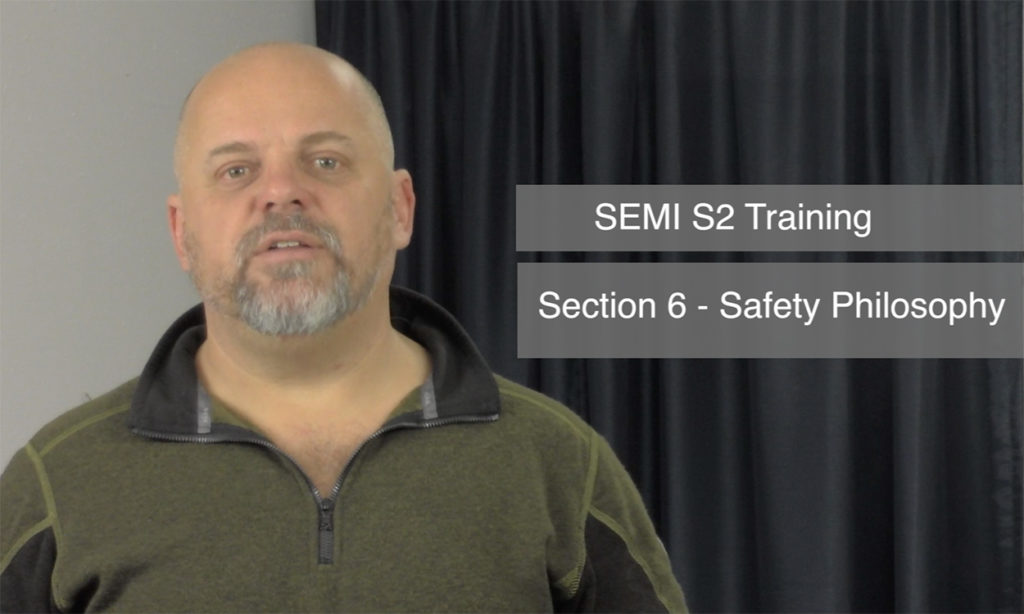In the Semiconductor Industry there are definitely some best practices and many of them stemmed from the SEMI S2 Standard. Our CEO, Steve Barcik Amstel has dedicated many years to help make things simpler, easier, safer and more practical on the path to compliance working with the SEMI S2 Standard.
(Link to video also available here: https://youtu.be/cPbb1FAh66k )
The previous video was all about setting up the standard as we went a little more in-depth with Sections 1 – 5 and today’s video is about the Section 6 – Safety Philosophy that is part of SEMI S2. This safety philosophy falls into it being best to engineer out a hazard first if possible. An example of that would be, if you don’t need a heater, then don’t use a heater…which is probably very obvious. Also in some of the sections it says if you can use a less dangerous chemical to achieve the same process, then do that. Another example, years back in the semiconductor industry, we were using a lot of 100% methanol or 100% IPA and it was found that if you drop that to 9.9% then it was no longer flammable and still did everything that it needed to do.
If you can’t engineer out the hazard, then you can provide guarding to prevent access to the hazard. If that guarding has to be removed or the guarding is a door or enclosure, then you can either mechanically fasten that door/enclosure and provide a label or you can provide an interlock. As it drops down from there, if you can’t interlock or guard the hazard and it is not a high hazard, then you can do other things like labeling or procedural steps to prevent contact with the hazard or documentation to prevent access to the hazard from a process stand point. And of course, the standard points out that this is only for lower hazard type items.
One of the things that we come up against a lot that is with heaters. If you open a door that is interlocked, the heat is still going to be there. The heater might turn off but things will still be hot in that space. So be aware of that type of issue.
Further on safety philosophy is to number one, use this standard in the design, the testing, the construction, the evaluation, the installation, the operation, and the decommissioning phases of the equipment. Use this standard for the entire life cycle of your piece of equipment. This will provide you a “Best Practices” reference to be sure that the equipment is at least meeting these standards.
The next part of the safety philosophy is to characterize the hazards that are remaining in your equipment. Do a risk assessment to identify which are the highest hazards in your equipment. You probably already know what they are; however, once you dig down deep into a risk assessment, it will clarify how you should manage those hazards and the relative risk around each hazard. This is the scope of the philosophy section of SEMI S2 and how the task forces and committees who wrote this standard approached writing SEMI S2. It was really all about how can we reduce hazards to an acceptable level for the fab, the factory making the semiconductor, and even for your own engineers, service people, maintenance people, for the people installing the equipment, and even at another level for the evaluators evaluating the equipment. In all…the idea behind SEMI S2 was to give a document that provided direction and a certification path to allow people to implement safe practices to provide safe equipment for the industry.
If you like this video, please like and subscribe. Leave a comment. And please reach out to us. We would really like to help you with your design process and run a conformity assessment for you.


